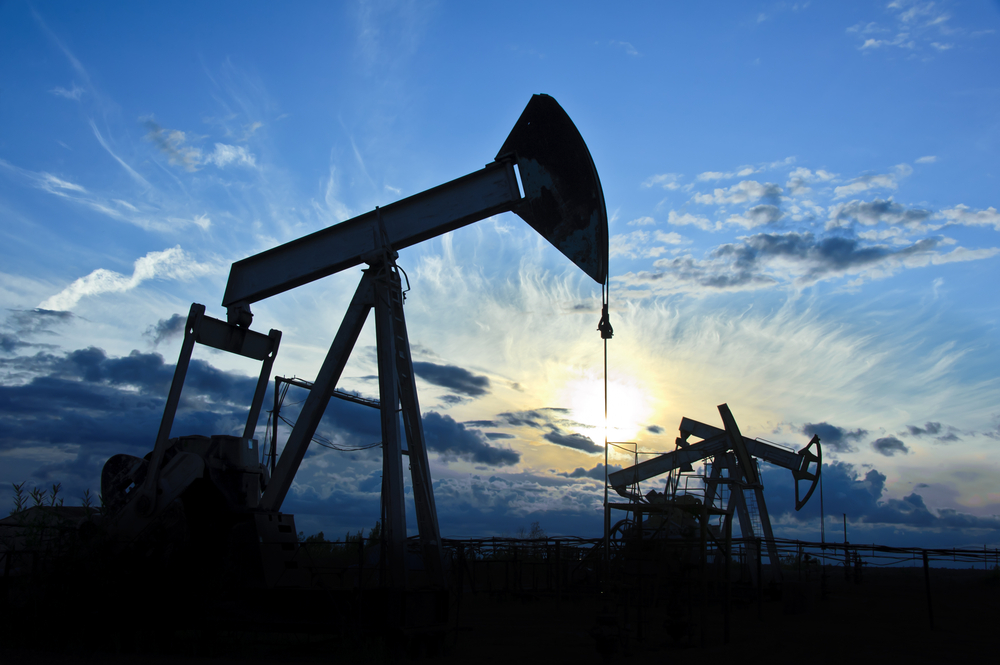Baker Hughes reported 907 active drilling rigs across the US, an increase of nine oil rigs. Canada notes an increase of 11 rigs to a total of 203. Independent Oil & Gas Service reported 13 active rigs in eastern Kansas, which is unchanged, and 38 west of Wichita, up two for the week. They’re drilling at sites in Ellis and Stafford counties, they’re reporting drilling ahead at sites in Russell and Stafford counties, and they’re moving in completion tools at leases in Barton, Ellis, Russell, and Stafford counties.
Kansas operators filed 37 drilling permits for new locations across the state last week, which brings the year-to-date total to just 1,227 permits. There were 18 new permits filed east of Wichita, and 19 in western Kansas, including one in Barton County.
Independent Oil & Gas Service reports 39 new well completions across Kansas last week, 1,156 so far this year. There were 15 completions filed in eastern Kansas, and 24 west of Wichita, half of which were dry holes. Operators reported one completion each in Barton, Ellis and Stafford counties.
After the Oklahoma House failed to pass a funding bill that included an increase in the Gross Production Tax on oil and gas wells, Governor Mary Fallin threatened to keep lawmakers in special session until Christmas. House Bill 1054 fell five votes short of the 75% super-majority vote needed for a tax bill under the state Constitution.
Two huge oil patch information services are joining forces. Drillinginfo of Austin, Texas has acquired Oklahoma City-based Oil-Law Records, a 62-year-old firm and one of the first oil and gas industry information providers in the United States. Financial terms were not disclosed. OLR’s CEO J. Brad McPherson told the Daily Oklahoman he and the other 11 Oil-Law Records employees will keep their jobs, and the Oklahoma City office will continue to operate as normal.
An appraisal expert told lawmakers the “honor system” isn’t working amid New Mexico’s record oil production. The state relies on self reporting for oil and gas machinery for taxation purposes. But Jerry Wisdom of Total Assessment Solutions told the state legislature they are losing out on millions of dollars in revenue because drilling rigs and other gear are not on the tax rolls.
Alaska Republican Senator Lisa Murkowski introduced a bill that would open up the coastal plain of the Arctic National Wildlife Refuge to oil and gas development. Congressional analysts estimate the ANWR legislation would raise nearly $1.1 billion over the next 10 years from the sale of leasing rights. The bill would require Interior Secretary Ryan Zinke to approve at least two lease sales of at least 400,000 acres. The first sale would be within four years, and the second would have to be finalized within seven years. The bill allows for 2,000 acres of the coastal plain to be developed with wells and support facilities.
A huge new oil-by-rail terminal proposed for the Port of Vancouver, Washington appears to be dead in its tracks. Unofficial results show a big majority of voters picked a critic of the project as their new Port Commissioner. Don Orange plans to cancel the Vancouver Energy lease. Orange and his opponent combined raised around $1 million, a large bulk of it from outside companies and oil interests. All that money in the race prompted some local lawmakers to start crafting legislation that would limit contributions for future port races.
The Bureau of Land Management’s lengthy permitting process has cost North Dakota an estimated 1,000 jobs in lost oil and gas opportunities and as much as $250 million in royalties and state taxes. That was the testimony of the state’s Mineral Resources Director Lynn Helms before a House subcommittee in Washington Wednesday. Lawmakers are considering changes that would let states manage oil and gas permitting in situations where the federal government doesn’t own surface rights.
Despite a lot of rain in North Dakota and some hurricane-related curtailments farther south, Oklahoma City based Continental Resources reported some record third-quarter numbers: $10.6 million in profits producing more than 242,000 barrels of oil equivalent per day. The profits come a year after 3rd-quarter losses of $175 million last year. Production was up nearly 35,000 barrels a day compared to a year earlier, and the company expects significant growth in the fourth quarter.
BP CEO Bob Dudley told CNBC the biggest risk for the global oil industry is Venezuela, “the real wild card,” which Dudley said is “defying economic gravity.”
Venezuela was to meet with its creditors Monday, seeking to restructure an estimated $150 billion in debt, much of it issued by the state oil company and now held by Russia and China. Late Sunday President Maduro said the oil-rich but cash-starved nation would never default. The US and EU have stepped up sanctions against the regime, adding an arms embargo this week.
Beijing has finished building the world’s largest oil platform in order to tap what China calls the ‘energy of the future’. The self-propelled drilling rig, called ‘Blue Whale II’, can reach sea depths of 50,000 feet. The enormous semi-submersible structure is expected to help China mine flammable ice, a kind of natural gas hydrate which has been discovered deep under the South China Sea. According to The Daily Mail, the vessel is 37 stories tall and weighs roughly the same as 195 Statues of Liberty.
OPEC reduced its estimate of the number of cars expected on the road in the next twenty years. The Organization of Petroleum Exporting Countries still expects more than two billion passenger vehicles on the road by 2040. But the new estimate is six percent less, down 137 million cars, from its prediction two years ago.

